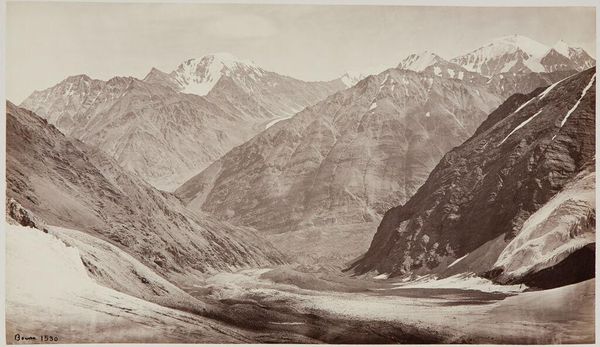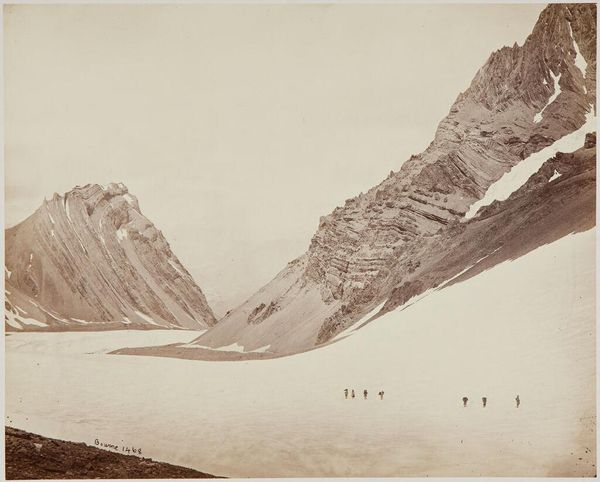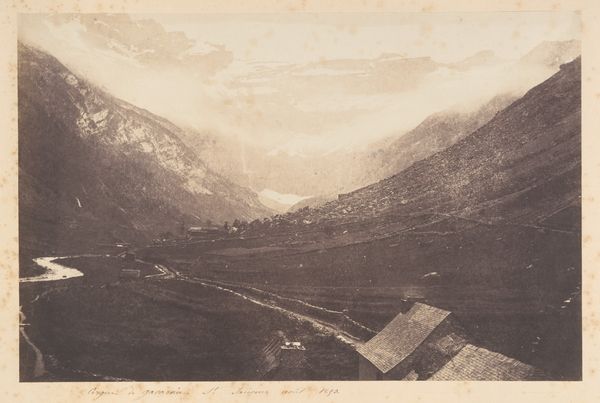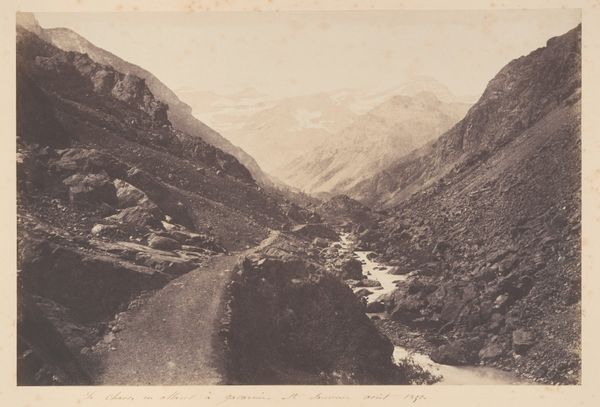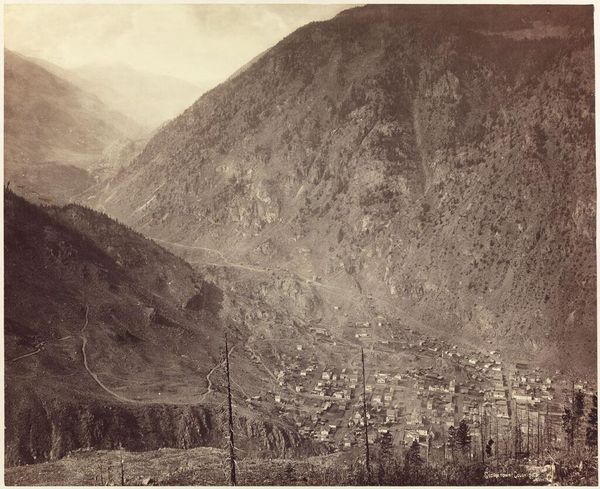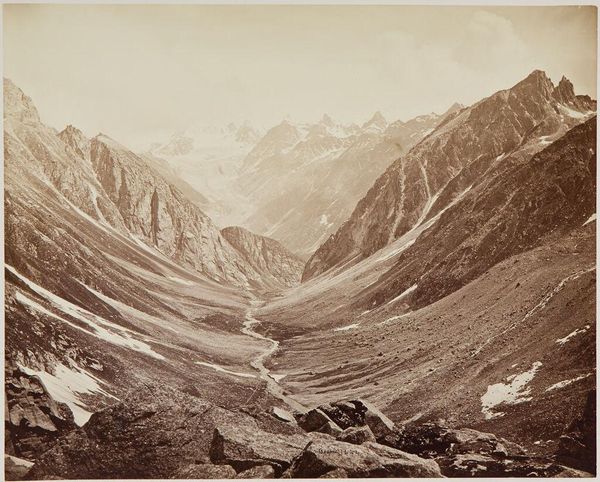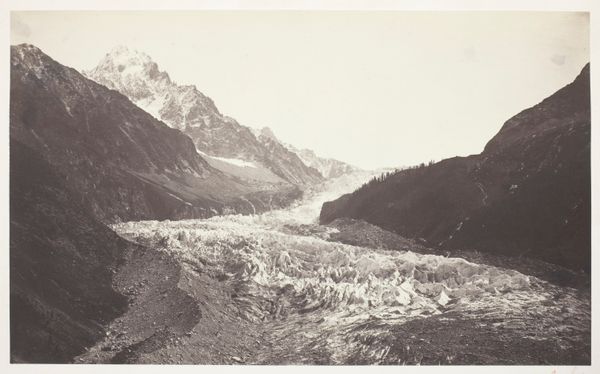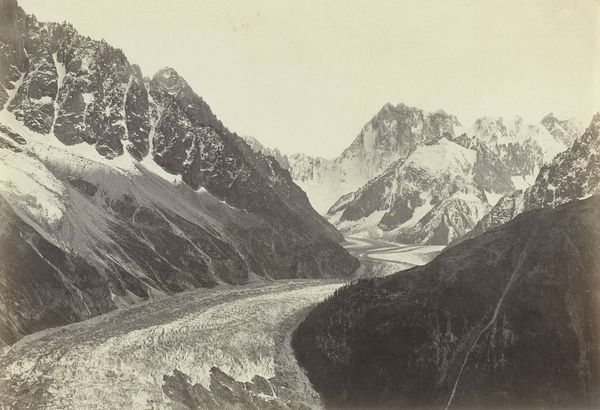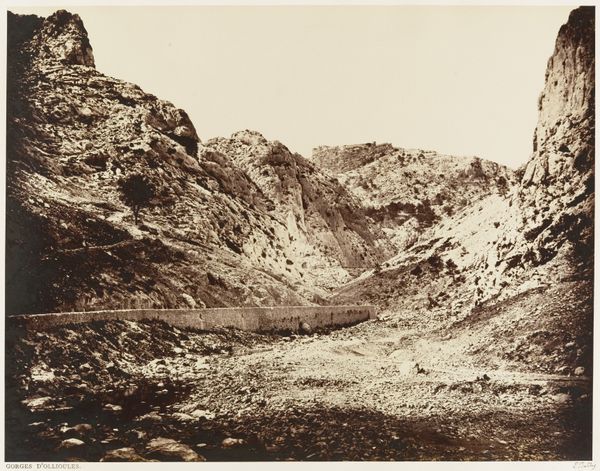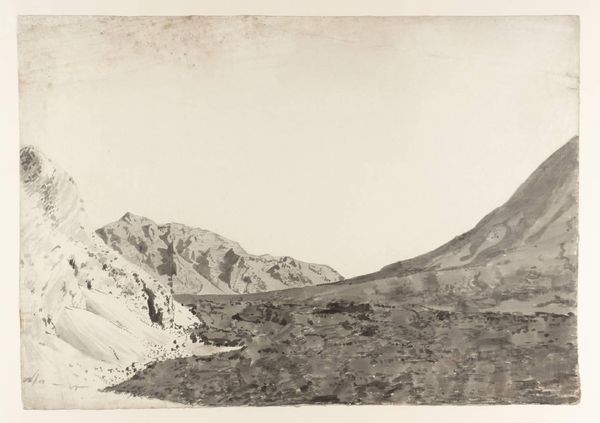
photography
#
pictorialism
#
landscape
#
nature
#
outdoor photography
#
photography
#
realism
Dimensions: height 81 mm, width 103 mm
Copyright: Rijks Museum: Open Domain
Curator: Here we have “Gezicht op de flanken van de Arlberg,” or "View on the slopes of the Arlberg," taken in 1900. It's a stunning example of landscape photography currently residing in the Rijksmuseum. What strikes you about it? Editor: The overwhelming feeling is one of isolation, a kind of pre-modern solitude in the face of nature’s monumentality. The monochromatic tones add to this somber mood. Curator: Absolutely. Thinking materially, this would have been a complex image to produce at the turn of the century, necessitating specific photographic techniques and darkroom processes. How do you think this affected its distribution and consumption at the time? Editor: I think access to such images was restricted to privileged classes. This image romanticizes remote spaces, seemingly untouched by the industrial revolution, but of course the roads, paths and visible constructed walls tell a different story. There is labour hidden behind every element of this picturesque composition. Curator: Good point. The infrastructure speaks to resource extraction and perhaps military concerns during a time of heightened geopolitical tension. How do we reconcile this with the aesthetic qualities? Editor: Well, there's a tension there, isn't there? This view suggests a deliberate framing of nature for consumption—literally and figuratively. Consider who gets to *see* and *experience* this landscape—the leisure traveler versus the person maintaining the very roads that make it accessible. Curator: It definitely challenges any simplistic notions of 'nature' or 'wilderness'. The manipulation, both in the taking of the image and in the material shaping of the landscape, forces us to question those ideas. Also the pictorialist style soften edges giving the feeling of the sublime. Editor: I agree. The pictorialism employed mediates our understanding and reception. What strikes me about this image is not its natural rawness but the processes of mediation and representation shaping our view and framing power dynamics. Curator: A great reminder of the power imbued within landscape imagery, whether in 1900 or today. The work, or lack thereof, on site shows the artifice in its making as much as its beauty. Editor: Indeed. The mountains silently conceal human history within their geological presence. It forces us to look beneath surface appearances and confront historical and ongoing socio-political relationships.
Comments
No comments
Be the first to comment and join the conversation on the ultimate creative platform.
